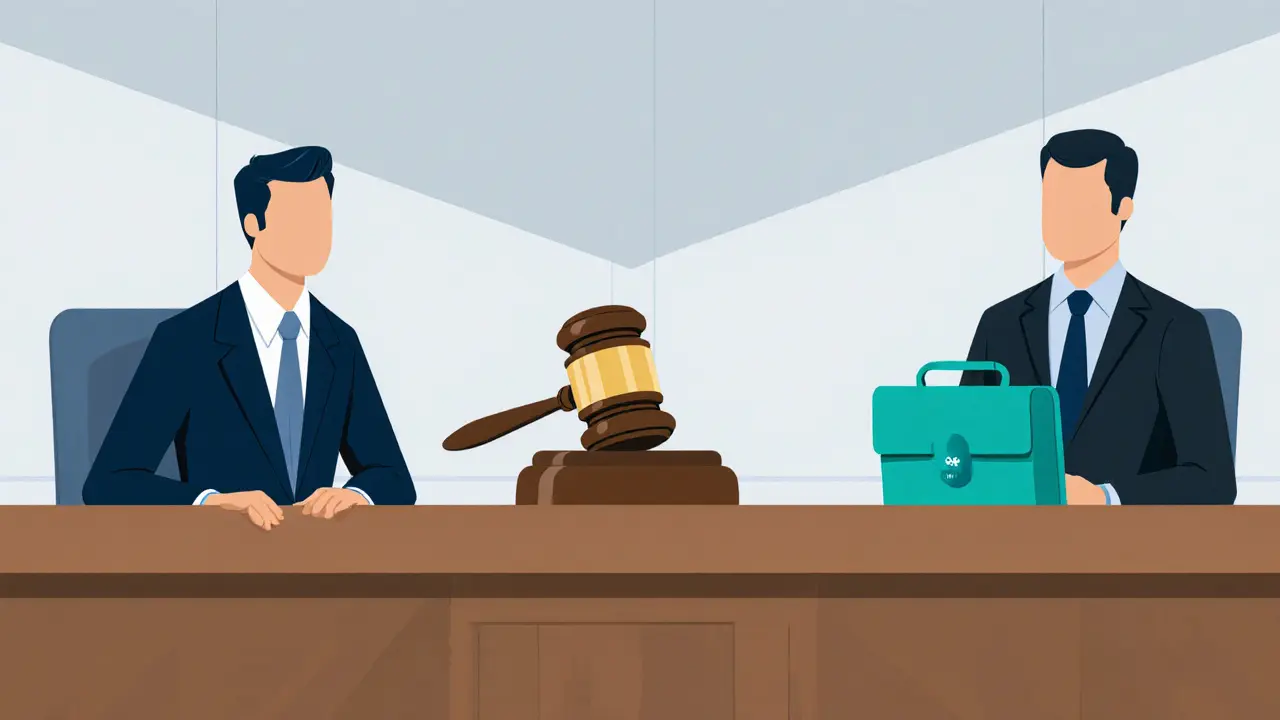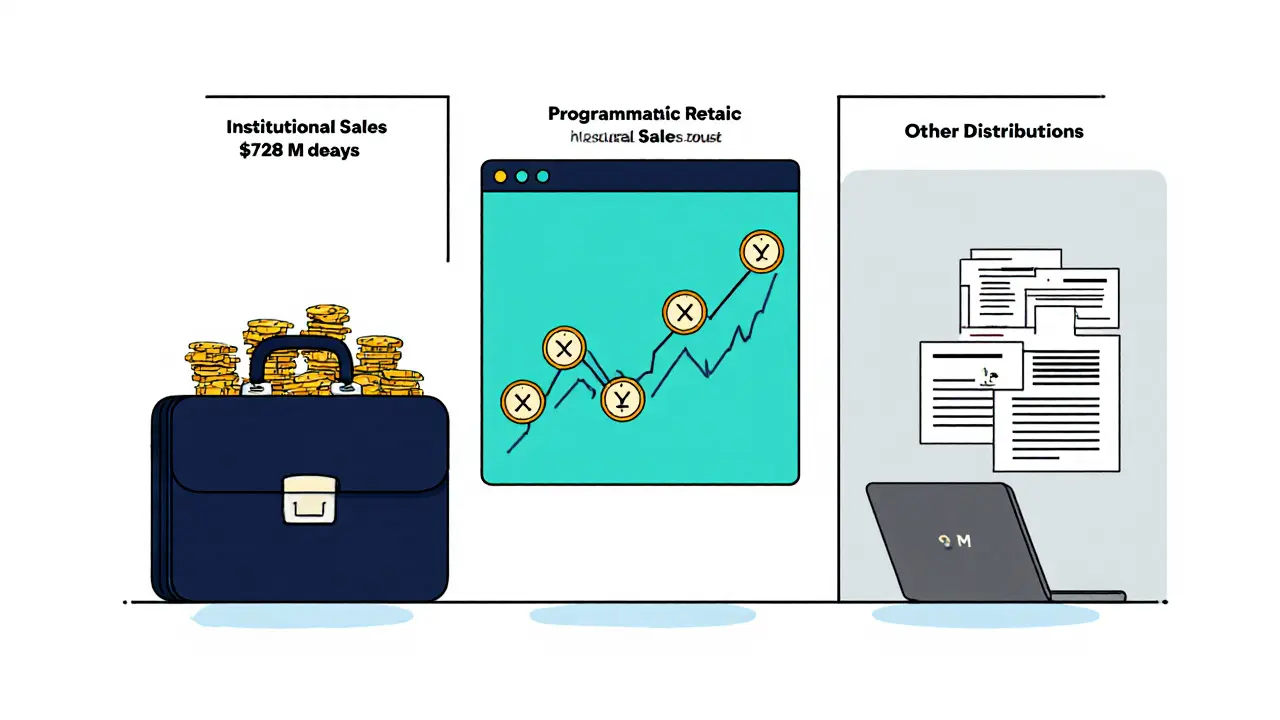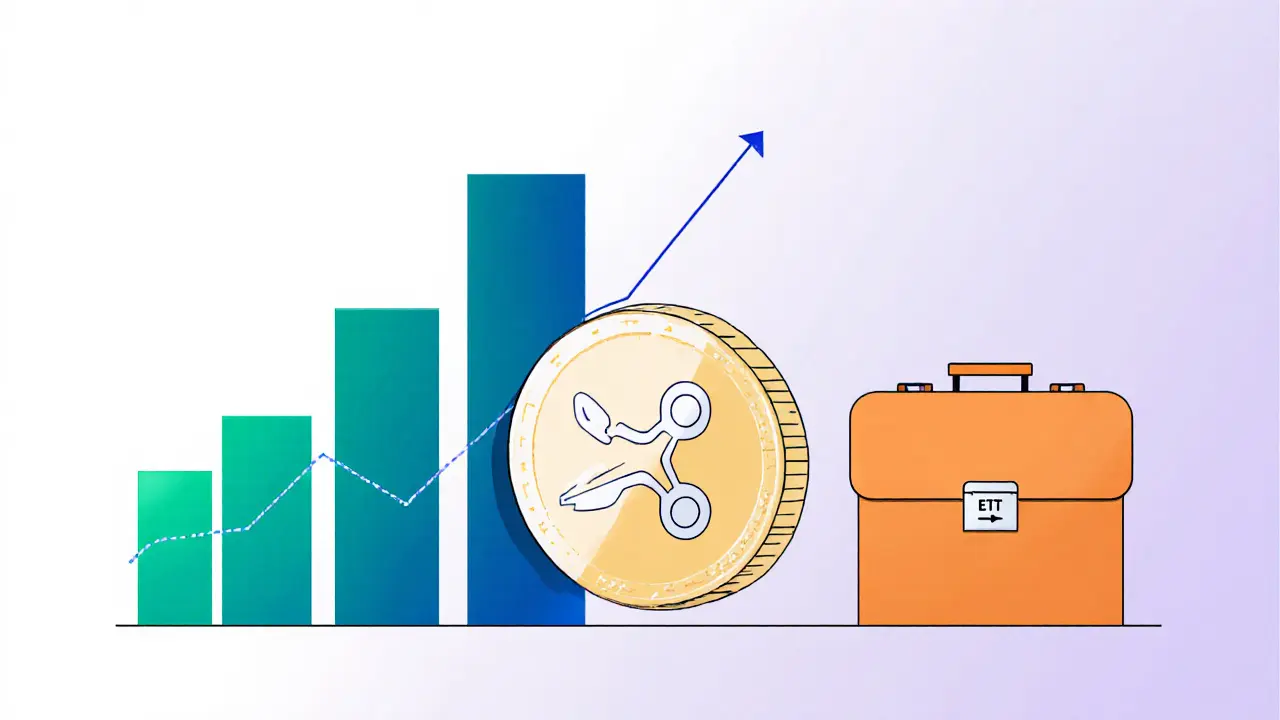Ripple vs SEC: Key Rulings, Market Fallout, and What It Means for Crypto
 Aug, 12 2025
Aug, 12 2025
When the Securities and Exchange Commission hauled Ripple a payments‑technology firm focused on the XRP digital token into court back in December 2020, few could predict how the case would reshape the whole crypto landscape. Five years later, the final judgment has finally landed, and its ripple effects are still being felt across exchanges, institutional portfolios, and regulatory roadmaps.
What the lawsuit was really about
The SEC argued that Ripple Labs, Inc., its CEO Bradley Garlinghouse, and co‑founder Christian Larsen sold unregistered securities worth roughly $1.3 billion by issuing XRP. The agency leaned on the classic Howey Test a four‑pronged analysis used to decide if an asset counts as a security to claim that anyone who bought XRP was an investor looking for profit from Ripple’s efforts.
Ripple pushed back hard, saying XRP is a currency, not a security, and that the token’s value comes from its utility on the XRP Ledger. The dispute boiled down to a single question: does the context of a sale turn a digital token into a security?
How the courts split the token’s status
Judge Analisa Torres issued a groundbreaking decision in July 2023. She didn’t label XRP a security across the board. Instead, she carved the market into three buckets:
- Institutional sales - direct deals with sophisticated investors, totaling about $728 million. These met every element of the Howey Test and were deemed securities.
- Programmatic sales - the retail‑focused trades that happen on public exchanges. Because buyers didn’t rely on Ripple’s managerial efforts, they fell outside the security definition.
- Other distributions - employee grants, developer rewards, and similar allocations, which the court treated on a case‑by‑case basis.
The Second Circuit Court of Appeals the federal appellate court that reviewed the lower‑court ruling affirmed the split in August 2025, sealing a nuanced framework: a token can be both a security and a non‑security, depending on how it’s sold.
The final settlement and its numbers
With the appellate approval, the litigation ended via a Joint Stipulation of Dismissal on August 22 2025. Ripple agreed to a civil penalty of $125,035,150-roughly 10 % of the SEC’s original claim. The judgment also includes an injunction preventing future unregistered offerings.
Even though the amount is a fraction of the $1.3 billion the agency sought, the real value lies in the legal precedent. The case introduced a transaction‑based test for digital assets, a model that regulators worldwide are already echoing.
Why the ruling matters for other crypto projects
Before Ripple, the SEC’s high‑profile cases against Telegram, Kik, and others offered little guidance beyond “tokens are securities.” Ripple changed that narrative. For example, the Telegram settlement forced the company to return $1.2 billion to investors, but it never clarified the underlying legal test. The Ripple decision, by contrast, gave a clear checklist:
- Identify the buyer’s sophistication.
- Determine whether the token’s value depends on the issuer’s managerial efforts.
- Apply the Howey Test only to the specific transaction, not to the token itself.
That checklist is now being used by counsel defending Coinbase, Binance, and even emerging DeFi protocols. In fact, the October 2025 Coinbase settlement explicitly referenced the Ripple framework when negotiating the treatment of several listed tokens.
Market reaction: price, volume, and sentiment
Traders reacted hard. XRP surged to an all‑time high of $3.42 in July 2025-a 480 % monthly gain-before settling into a $2.80‑$3.20 range. Trading volume jumped from $4.9 billion in June to $28.7 billion in July, reflecting a flood of institutional orders now confident that the token’s retail market is safe from a securities‑law perspective.
Social‑media buzz followed suit. LunarCrush reported a 320 % spike in XRP mentions the week after the dismissal, with 78 % of posts carrying a positive tone. Reddit’s r/Ripple thread recorded an 87 % positive sentiment across 1,243 comments during the same period.

Institutional adoption accelerates
With regulatory risk lowered, financial firms have started building XRP‑centric products. The first SEC‑approved XRP ETF, ProShares Ultra XRP (UXRP), launched on July 15 2025 and amassed $427 million in assets under management within its first month. Bloomberg Intelligence now forecasts $50 billion in total XRP ETF assets by mid‑2026.
Ripple’s own On‑Demand Liquidity (ODL) service processed $15.3 billion in cross‑border payments in Q3 2025-a 210 % quarterly jump. The company also announced a strategic merger with Armada Acquisition Corp. II, locking 126.8 million XRP (about $305 million at current prices) in escrow for conversion into equity.
These moves have pushed institutional ownership of XRP from 22 % at the end of 2024 to 37 % by September 2025, according to Chainalysis data.
How the ruling is reshaping the regulatory playbook
SEC Chair Paul Atkins, who took the helm in January 2025, launched “Project Crypto” in August 2025, promising clear guidelines for classifying digital assets within a year. The project’s draft rules directly echo the Ripple decision’s transaction‑focused approach, signaling that future enforcement actions will likely split tokens into “security‑type” and “non‑security‑type” based on sale mechanics.
Beyond the United States, regulators in the EU and Japan have cited the Ripple case when drafting their own frameworks. The EU’s MiCA regulation, for instance, now contains a provision that distinguishes token offerings by investor profile-a clear nod to the Howey‑test split pioneered in New York.
Comparison with other landmark SEC cases
| Case | Year Filed | Claimed Amount | Final Penalty | Legal Outcome |
|---|---|---|---|---|
| Ripple Labs, Inc. v. SEC | 2020 | $1.3 B | $125 M | Dual‑classification (institutional sales = security, retail = non‑security) |
| Telegram Group Inc. v. SEC | 2019 | $1.2 B | $0 (settlement - token returned to investors) | Company ceased token sale, returned funds |
| Kik Interactive Inc. v. SEC | 2019 | $100 M | $5 M | Violation confirmed, penalty imposed |
| Coinbase v. SEC (ongoing) | 2023 | - | - | Pending; now referencing Ripple framework |
The table shows the Ripple case stands out for creating a legal template rather than just handing down a penalty.
Practical steps for crypto projects after Ripple
If you’re building a token, here’s how to use the Ripple precedent to stay on the safe side:
- Map every sale channel. Separate private placements (likely securities) from public exchange listings (likely non‑securities).
- Publish a clear token‑distribution plan. Include investor qualifications, lock‑up periods, and any reliance on the issuer’s efforts.
- Consider filing Form D for private offerings to pre‑empt an SEC enforcement action.
- Engage counsel experienced in the Howey Test’s transaction‑based analysis.
- Monitor regulatory updates from Project Crypto and adjust your compliance program accordingly.
Following these steps can turn a risky token launch into a compliant, investor‑friendly offering.
Looking ahead: what’s next for XRP and the wider market?
The Ripple ruling has set the stage for a wave of spot‑ETF products, and analysts expect the first XRP‑based ETF to reach $5 billion in assets by the end of 2026. Meanwhile, the XRP Ledger is gaining new capabilities through the Flare Network, which now hosts over 140 dApps processing $2.7 billion in value.
Supply‑side dynamics could also shift. Ripple has already moved 1.2 billion XRP into strategic partnerships, a 4.8 % reduction in circulating supply. If the trend continues, the token’s scarcity could add upward pressure on price-especially as institutional demand stays high.
Overall, the case proves that clear legal boundaries can boost confidence, liquidity, and innovation all at once. For anyone watching crypto’s regulatory evolution, Ripple’s saga is the playbook that will be referenced for years to come.

Did the Ripple case declare XRP a security?
No. The court ruled that only institutional sales of XRP meet the Howey Test, while retail trades on exchanges do not. In short, XRP can be a security in some contexts and not in others.
How much did Ripple have to pay the SEC?
Ripple agreed to a civil penalty of $125,035,150, which is about 10 % of the $1.3 billion the SEC originally sought.
What is the impact on XRP’s price?
After the dismissal, XRP jumped to $3.42 in July 2025-a 480 % monthly gain-and trading volume surged to nearly $30 billion, indicating strong institutional buying.
Will other tokens get the same dual‑classification?
The SEC’s new “Project Crypto” guidance suggests future enforcement will use the transaction‑based test introduced in Ripple, so other tokens could be treated similarly based on how they’re sold.
How can a crypto project avoid being deemed a security?
Separate private, institutional offerings (which may need registration) from public exchange listings, disclose all material information, and consider filing exemptions like Form D for private sales.
Derajanique Mckinney
October 25, 2025 AT 10:20Rosanna Gulisano
October 26, 2025 AT 01:56Sheetal Tolambe
October 26, 2025 AT 09:44gurmukh bhambra
October 26, 2025 AT 20:48Sunny Kashyap
October 27, 2025 AT 18:00james mason
October 28, 2025 AT 12:29Anna Mitchell
October 29, 2025 AT 03:41Pranav Shimpi
October 29, 2025 AT 21:44jummy santh
October 30, 2025 AT 02:57Kirsten McCallum
October 30, 2025 AT 16:09Henry Gómez Lascarro
October 31, 2025 AT 04:02Will Barnwell
October 31, 2025 AT 08:19Lawrence rajini
October 31, 2025 AT 10:44Matt Zara
October 31, 2025 AT 15:51